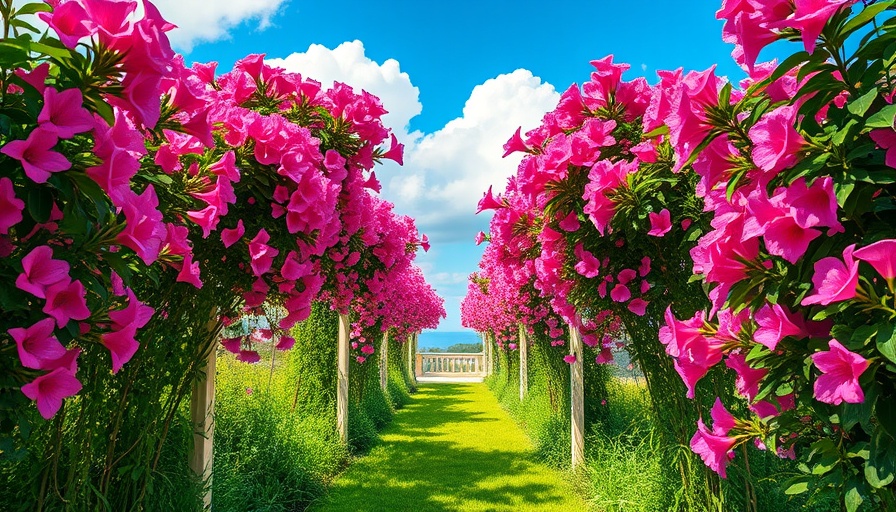
Unleash the Romance of Paris in Your Backyard
Imagine stepping into your very own garden, where the air is fragrant with blooming roses and the charm of Paris surrounds you. A Paris-inspired garden not only infuses elegance and romance into your outdoor space but also creates a sanctuary for relaxation and reflection. Whether you possess a sprawling landscape or just a cozy balcony, it is possible to embrace the sophistication of the French capital and convert your backyard into a picturesque escape.
Start With Romantic Flower Choices for a Paris Garden
The first step in crafting your Parisian paradise begins with choosing the right flowers. Incorporating blooms that embody the allure of Paris provides your space with elegance and fragrant beauty. Opt for soft pastel roses, lush peonies, and aromatic lavender, the botanical gems that add layers of fragrance, texture, and visual appeal.
Consider the following blooms for an enchanting garden experience:
- Hybrid Tea Roses: Renowned for their upright growth and striking high-centered blooms that flourish in shades of pink, cream, and red, these roses exude a sweet fragrance, making them a staple in any Paris-inspired garden.
- Peonies: These bushy perennials return year after year, boasting lush foliage and rounded flowers that bloom in white, pink, red, and coral. Their delicate scent adds a sweet touch to your outdoor atmosphere.
- Lavender: Compact and aromatic, lavender’s silvery foliage and upright stems adorned with violet blossoms serve to calm the senses, creating a soothing backdrop to your Parisian retreat.
- Tulips: Available in a rainbow of colors, these bulb flowers burst forth each spring, offering vibrant and delightful hues that attract the eye, albeit with minimal fragrance.
Strategically plant fragrant flowers near seating areas to enhance the allure of your outdoor gatherings, reminiscent of the beloved café terraces in Paris.
Grow Climbing Plants for Vertical Parisian Charm
Incorporating climbing plants adds height, texture, and grace to your garden, enhancing its aesthetic appeal. These plants transform walls, fences, and trellises into living artworks that capture the essence of a Parisian environment.
Imagine archways draped with wisteria blooms or a cozy pergola adorned with climbing roses, creating intimate spaces ideal for savoring a cup of coffee. Vertical growth offers practical benefits too, providing shade, privacy, and structure—essential in smaller outdoor areas while achieving that lush Parisian ambiance.
Leverage Flowering Trees for Seasonal Drama
In a Paris-inspired garden, flowering trees like cherry blossoms and magnolias add a breathtaking focal point. These trees are not only visually stunning but also introduce seasonal drama, making every visit to your garden a unique experience. The cherry blossoms burst into a riot of pastel colors in spring, marking the change of seasons, while magnolias flaunt their large, fragrant blooms, captivating anyone who walks by.
Planting these trees not only provides beauty but also enhances the overall landscape design through height and structure. As they mature, they offer delightful shade, inviting you to spend more time in the great outdoors.
Incorporate Classical Design Elements for Authentic Charm
Beyond selecting the right plants, designing a Paris-inspired garden involves incorporating traditional elements that nurture a classic French aesthetic. Think about adding ornamental features such as wrought-iron gates, elegant pathways of stone, or classic benches that invite relaxation. Consider creating intimate nooks adorned with mirrors, statues, or bubbling fountains, enhancing the tranquil atmosphere.
Classic design features like symmetrical planting schemes and structured flower beds enhance the elegance of your garden. You might even consider a stylish gravel path bordered with lush greenery, culminating in a central focal point—perhaps a well-placed birdbath or striking sculpture.
Future Predictions: What’s Trending in Gardening?
As more homeowners embrace outdoor living spaces, the trend for creating personal garden retreats is booming. With greater access to online gardening resources and a focus on sustainability, expect to see a rise in eco-friendly, organic gardening practices. Native plants, pollinator-friendly spaces, and vertical gardening will gain popularity as people strive for personalization and resilience in their gardens. This shift encourages not only beauty but also biodiversity and environmental consciousness.
Embrace the Beauty and Peace of Your Paris-Inspired Garden
Creating a Paris-inspired garden offers the dual benefit of enriching your outdoor space with beauty while providing a tranquil retreat for relaxation and reflection. Whether you’re lounging amidst fragrant blooms or enjoying a moment of peace beneath a flowering tree, the allure of Paris can be felt right at home.
So roll up your sleeves, choose your flowers, and embrace the art of French gardening today. Your very own piece of Paris awaits!
Call to Action: Get started on your journey to create a Paris-inspired garden today! Explore expert tips, choose your favorite plants, and begin designing your own elegant escape. Transform your outdoor space into a haven of beauty and tranquility!
 Add Row
Add Row  Add
Add 




Write A Comment